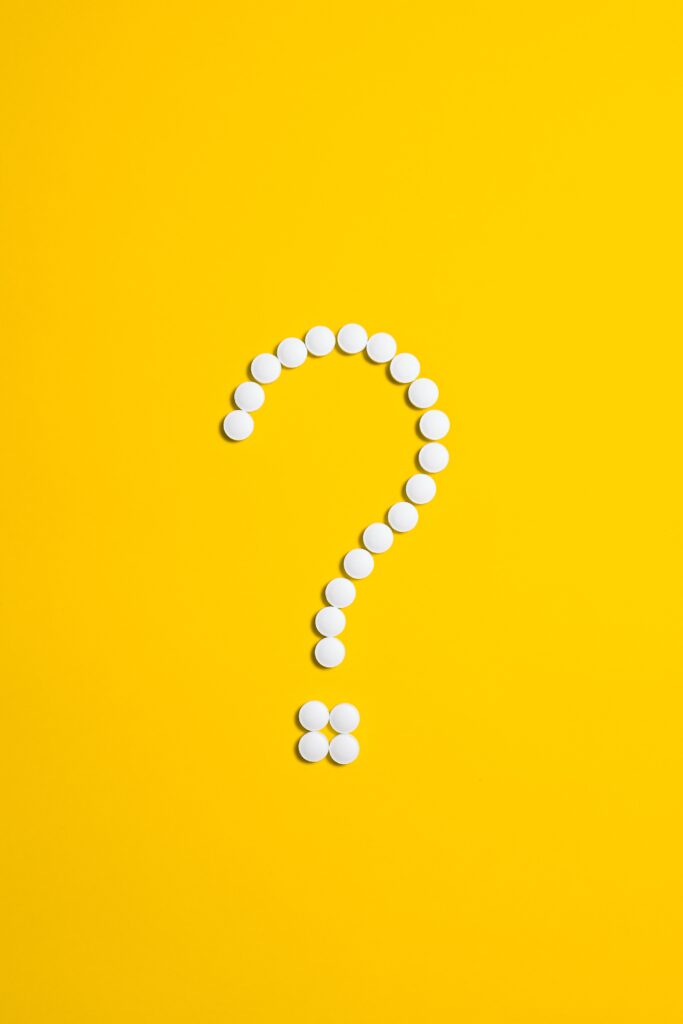By Samira Hussein

Annie is an eighteen year old girl attending university for the very first time. For as long as she could remember, she never had any issues with her appearance other than brief, superficial concerns about a new hairstyle or trying on a different outfit in the changing room. It wasn’t until recently, entering this completely new environment, that she began to become concerned with her looks and the way she presents herself to other people. One of her major worries is that her face is asymmetrical, and that one side of her jaw appears larger than the other. As well, she is extremely concerned that she will soon be unable to fit into her clothing, despite maintaining her weight.
These body image concerns begin to overwhelm Annie. To relieve some of her worries, she begins to uncontrollably check every reflective surface she passes by, including shop windows and bathroom mirrors, as well as taking numerous photos with her smartphone. Some days, she finds it difficult to gather the courage to leave her dorm room and attend class or hang out with her friends because of her appearance concerns. She is intensely worried about what other people might think of how she looks, and unfortunately finds herself slowly withdrawing from the new friendships she’d acquired in this new environment. Annie feels very alone and isolated due to this, so sometimes she’ll have a couple of drinks to pass the time and help her calm down. At first, it’s only a few glasses of wine before bed to help relax after missing an important class, or when she fears her friends hate her for missing another outing, but soon she finds herself needing more to get that same effect. Unfortunately, Annie ends up failing two classes in her first semester, much to the disappointment of her parents. Despite trying to cut back on the amount of alcohol she drinks, Annie finds it extremely difficult.
What is Body Dysmorphia?

The intense stress Annie experiences as a result of her unhealthy obsession with her body image is consistent with a psychological condition called Body Dysmorphia, or Body Dysmorphic Disorder (BDD). This is a disorder where people tend to become extremely focused on a perceived defect of their appearance (such as weight gain, whether it is there or not) that causes the person extreme feelings of distress. This distress often interferes with their ability to function on a daily basis, such as in their ability to keep up with their personal relationships, schoolwork, and even work obligations (Grant et al., 2008). BDD can be characterized by:
- Obsessive thoughts that disrupt daily
- Making constant comparisons with others
- Extremely frequent grooming behaviours (such as skin picking, pulling hair, applying makeup, etc.)
- Camouflaging or hiding the area of insecurity (e.g., wearing baggy clothes)
- Behaviours that are repetitive or even ritualistic in order to reduce distress (this includes searching for constant reassurance from others, body checking in reflective surfaces, taking photos, and more)
Body dysmorphia can interfere greatly with one’s functioning in everyday life, as misperceptions about their appearance can often occupy their attention for extended periods of time (Buhlmann et al., 2008). Social situations may be extremely difficult to attend, as individuals with BDD are prone to feelings of anxiety, shame, discomfort, and embarrassment due to their concerns (Cunningham et al., 2017). The difficulties associated with BDD can lead to a variety of poor health outcomes that require greater attention, including but not limited to potential eating disorders as well as issues with substance use.
Trends to Consider
BDD tends to arise within young adults and adolescents, and due to the stigma and secretive nature of this disorder, it most commonly can become chronic in duration, thus increasing the potential for poor health outcomes (Veale et al., 1996; as cited in Buhlmann et al., 2008; Grant et al., 2008). Many individuals do not receive treatment until the disorder has significantly progressed in severity due to stigma and barriers, and taking into account mental health issues that may arise over the course of one’s life, symptoms and treatment will vary from person to person (Schneider et al., 2019). A lower quality of life, increased risk of suicide, and substance use in particular are heavily implicated in trends associated with BDD. Recent research suggests some individuals may misuse substances to help cope with the negative emotions and feelings that come with BDD, especially among university students who may use drugs for social engagements (Cunningham et al., 2017). These trends are extremely alarming when considering the potentially severe impact this disorder can have over the course of a lifetime, highlighting an increasingly important area for further research.
So, how is Body Dysmorphia and Drug Use Related?

Many individuals living with BDD understandably struggle to manage their intense feelings of distress even with their compulsive and ritualistic behaviours, and in recent years, researchers have noticed a link between BDD and substance use. Recreational drug use is often adopted by people struggling with extreme distress as a result of BDD in order to cope, with the most common substances being alcohol and cannabis (Gunstad & Phillips, 2003; Phillips et al., 2005; as cited in Kelly et al., 2017; Grant et al., 2019; Grant et al., 2008). The amount of individuals both struggling with a substance use disorder as well as BDD is considered extremely high. Dealing with both disorders at the same time can further exacerbate issues with day-to-day functioning, suicidality, and overall well being (Phillips, 2007; as cited in Kelly et al., 2017; Grant et al., 2005). This relationship has been of particular concern following a 2008 study by Grant et al., in which approximately half of a group of young adults adolescents with body dysmorphia reported that their symptoms relating to BDD were partly responsible for their drug use in the first place. Despite many individuals reporting using substances as a coping mechanism to deal with their emotions, research has suggested that those with substance use disorders tend to have extreme symptoms related to BDD, such as more hospitalizations and poorer overall functioning (Grant et al., 2008). Additional research has found links between poor body image and dangerous drinking specifically in the undergraduate university population, and that main reasons for drinking may be to cope with concerns about one’s body image concerns in public social settings (Cunnningham et al., 2017; Kellelly et al., 2017). Despite numerous studies highlighting the relationship between substance use and BDD, it is not yet entirely known why this specific relationship occurs. Instead, the focus is primarily on treating individuals with both of these disorders. Co-occurring drug use with body dysmorphia is complicated, and due to shame and embarrassment, some individuals may be reluctant to tell their clinician that they have BDD when entering treatment for a substance use issue. Failure to treat one or the other can result in poor health outcomes, especially if BDD is not addressed as a potential underlying influence for the substance use (Grant et al., 2008). More research is needed to fully understand the complex relationship between the two disorders and how they can negatively impact one’s quality of life and treatment outcomes.
Minority Groups at Risk: LGBTQ+
A particular group has been highlighted in numerous research studies to be particularly vulnerable to issues with both substance use and BDD. Previous research examining the relationship between body dysmorphic disorder and sexual and gender minorities suggests that individuals identifying as gay, lesbian, bisexual, and/or transgender are at risk for intense concerns regarding their body image and appearance. The Minority Stress model (Meyer, 1995; as cited in Oshana et al., 2020) suggests individuals that are part of the LGBTQ+ community are exposed to stress constantly, and this stress leads to negative expectations for interacting with other people. In order to minimize the amount of potential poor, a person might try to hide any potential indicators of their minority status and focus intently on the way they present themselves to others, including through their appearance and behaviour (Meyer, 2003; as cited in Oshana et al., 2020). Minority stressors that are unique to individuals of minority status includes:
- Fear of rejection
- Concealment of sexual orientation
- Prejudice and discrimination
- Stigma
- Violence
- Internalized homophobia
Exposure to stressors like these tend to be chronic for many individuals, which unfortunately can increase one’s risk for developing mental health issues (Parker & Harriger, 2020). Body dysmorphia research has noted increased rates of body dissatisfaction in male college students who are gay or bisexual compared to heterosexual men, and further research has noticed that university students who reported symptoms consistent with BDD had a tendency to also identify as trans or gender queer, noting the added stress in this population on top of the challenges associated with young adulthood possibly has a major impact in the development of body image issues (Oshana et al., 2020; Grant et al., 2019). This is an extremely underdeveloped area of research, however. A growing focus on the relationship between substance use and body dysmorphia might suggest that sexual and gender minorities may particularly be at risk for substance use issues. Additional research on unique health outcomes and effective methods of treatment (especially those that are sensitive to the unique experiences of sexual/gender minorities) thus must be prioritized.
What can we do to help?
While this is a relatively new field of research, there is enough existing research on treating body dysmorphic disorder and substance use disorders separately to suggest that we’re heading in the right direction. In the case of Annie, entering college is an extremely formative period that can increase one’s stress greatly. Similar to many other individuals with co-occuring issues using drugs while struggling deeply with their body image, body dysmorphia has consistently been found to be the initial mental health concern that leads to substance use as a coping mechanism. People in Annie’s situation will be glad to know that cognitive behavioural therapy combined with psychoeducation is considered to be an effective mode of treatment for both body dysmorphic disorder and substance use disorders (Buhlmann et al., 2008; McHugh, Hearon, & Otto, 2010; as cited in Cunningham et al., 2017). However, due to the complexity of both disorders and potential complications of treating one and ignoring the other, it is extremely important for clinicians to ensure they adequately screen individuals for BDD as a co-occurring condition. Populations that require this extra level of care include young adults as well as marginalized individuals (including sexual and gender minorities, and perhaps even ethnic minorities as well). Future research on the impact of minority stress and treatment is needed, especially on how to potentially adapt existing forms of treatment to become more sensitive to the unique experiences of individuals from minority groups.
Resources
Both body dysmorphia and substance use disorders run into the issue of stigma, and one of the major barriers to treatment for individuals struggling with either or both disorders is shame and secrecy. It is important to remember that both body dysmorphic disorder and substance use issues are not taboo, and honest, public dialogue is the best way to ensure that anyone struggling no longer feels alone.
If you or anyone you know is having thoughts of suicide, please contact:
- Canada Suicide Prevention Service at 1-833-456-4566 (24/7)
- Kids Help Phone at 1-800-668-6868
- Hope for Wellness at 1-855-242-3310
References
Ahmedani B. K. (2011). Mental Health Stigma: Society, Individuals, and the Profession. Journal of social work values and ethics, 8(2), 41–416.
Buhlmann, U., Reese, H. E.eese, Renaud, S., & Wilhelm, S. (2008). Clinical considerations of treatment of body dysmorphic disorder with cognitive-behavioural therapy. Body Image, 5, 39-49.
Cunningham, M., Stapinski, L., Griffiths, S., & Baille, A. (2017). Dysmorphic Appearance Concern and Hazardous Alcohol Use in University Students: The Mediating Role of Alcohol Expectancies. Australian Psychologist, 52(6), 6), 424-432.
Grant, J. E., Lust, K., & Chamberlain, S. R. (2019). Body Dysmorphic Disorder and Its relationship to Sexuality, Impulsivity, and Addiction. Psychiatry Research, 273, 260-265.
Grant, J. E., Menard, W., Pagano, M. E., Fay, C., C., & Phillips, K. A. (2008). Substance Use Disorders With Body Dysmorphic Disorder. Journal of Clinical Psychiatry, 66(3), , 309-405.
Kelly, M. M., Simmons, R., Wang, S., Kraus, S., Donahue, J., & Phillips, K. A. (2017). Motives to drink alcohol among individuals with body dysmorphic disorder. Journal of Obsessive-Compulsive and Related Disorders, 12, 52-57.
Oshana, A., Klimek, P., & Blashill, A. J. (2020). Minority Stress and body dysmorphic disorder symptoms among sexual minority adolescents and adult men. Body Image, 34, 167-174.
Pagano, M. E., Phillips, K. A., Stout, R. L., Menard, W., & Piliavin, J. A. (2007). Impact of Helping Behaviors on the Course of Substance-Use Disorders in Individuals with Body Dysmorphic Disorder. Journal of Studies on Alcohol and Drugs, 68, 291-295.
Parker, L. L. & Harriger, J. A. (2020). Eating disorders and disordered eating behaviors in the LGBT population:: a review of the literature. Journal of Eating Disorders, 8(51).
Ruffolo, J. S., Phillips, K. A., Menard, W., W., Fay, C., & Weisberg, R. B. (2005). Comorbid. Ity of body dysmorphic disorder and eating disorders: Severity of psychopathology and body image disturbance. International Journal of Eating Disorders, 39(1)1), 11-19.
Schneider, S. C., Turner, C. M., Storch, E. A., & Hudson, J. L. (2019). Body dysmorphic disorder symptoms and quality of life: The role of clinical and demographic variables. Journal of Obsessive-Compulsive and Related Disorders, 21, 1-5.
Zimmerman, M. & Mattia, J. I. (1998). Body dysmorphic disorder in psychiatric outpatients: Recognition, prevalence, comorbidity, demographic, and clinical correlates. Comprehensive Psychiatry, 39(5), 265-270.

































